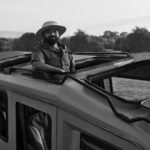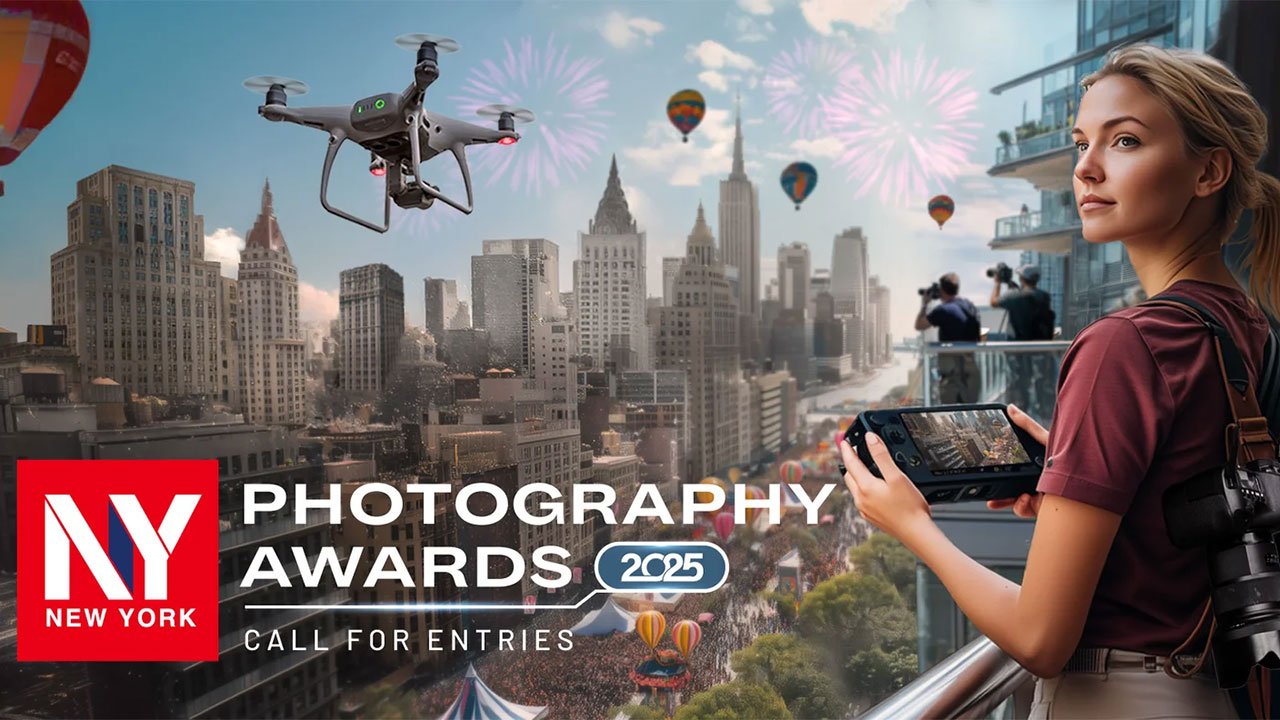
2025 NY Digital Awards Announces Season 1 Winners: Celebrating Digital Creativity Across Design, Video, Web, and Mobile Excellence
June 20, 2025
Photographer of the Year Mital Patel on Turning Childhood Curiosity into a Lifelong Craft
June 23, 2025Claudio Castilletti
Claudio Castilletti is a Sicilian-born visual artist whose work bridges photography, painting, and set design, grounded in a style he defines as “ironic expressionism.” Through ceremonial scenes and everyday rituals, he captures the tension between identity and appearance, using irony and aesthetics to transform fleeting moments into universal reflections.
Thank you so much! It’s truly an honour to receive this recognition at the London Photography Awards. My name is Claudio Castilletti, I was born in Vittoria, Sicily, and my artistic background began with painting and set design.
Photography entered my life as an expressive necessity—a direct language capable of capturing the complexity of reality through irony, aesthetics, and daily observation. My first intentional photograph was part of a reportage, where I discovered how a single gaze could transform an ephemeral moment into a universal story.
From there, my work evolved into a style I call "ironic expressionism": I use ceremony, the social ritual, to reflect on identity, appearance, and expressive freedom. Every project begins with a personal urgency, but always opens to the collective. Over time, I’ve learned that technique must serve the concept, and what truly gives strength to an image is its ability to make people reflect—even lightly.
Lastly, I want to thank my academic advisor, Armando Romeo Tomagra, who supported me with great dedication throughout the development of my book The Ceremony, Like a Life, from which the winning photograph was taken.
The awarded photograph is part of my publication The Ceremony, Like a Life, a project that reveals the eternal dance between the masks we wear during solemn moments—such as a wedding—and the true essence of our inner selves.
Inspired by Luigi Pirandello’s One, No One and One Hundred Thousand and Carl Gustav Jung’s theory of the “persona,” this work seeks to capture the fragile beauty of human interiority, often hidden behind the veils of social conventions.
Marriage, in this context, becomes a metaphor: a celebration of idealisation and perfection, yet simultaneously a stage where the complexity of human nature is concealed. Through this work, I aim not only to portray that poetic tension but also to advocate for a broader recognition of wedding photography as a legitimate art form within academic and artistic circles.
Winning this award fills me with a profound sense of validation—not only for the aesthetic choices I’ve made, but also for the deeper intention behind them. It confirms that photography can challenge perceptions, provoke thought, and elevate even the most familiar rituals into spaces of critical and emotional reflection.
Choosing which photograph to submit to a competition is never random. For me, it’s a process that blends instinct, narrative coherence, and critical reflection.
First, I consider the theme and context of the competition: every jury has a different sensibility, and each award values specific elements—whether conceptual, aesthetic, or technical. Then, I look for an image that is not only visually strong but also authentically represents my artistic language and ongoing research.
I often choose a photograph that tells a story on its own, yet belongs to a broader project. It must hold a certain tension, a question, something unresolved—much like a good poem. Ultimately, it’s the image that continues to speak to me over time, even after I’ve taken it, that deserves to be shared.
The first time I picked up a camera, it was out of curiosity—but also from a need for expression. Coming from a background in painting and set design, I felt the urge for a more immediate language, one capable of capturing the moment while still telling a deeper story.
Photography fascinated me because it combined the discipline of composition with the unpredictability of real life. It became a way to observe more carefully, to be more present and sensitive to the world. Over time, the camera turned into an extension of my gaze—a tool for seeking truth, even when it hides behind a smile or an ordinary gesture.
My favourite type of photography is ceremonial photography—understood in a conceptual and symbolic sense. I love this genre because it offers fertile ground where genuine emotions, rituals, social expectations, and an often-subtle tension between appearance and reality come together.
Through ceremony, I explore the human condition—its masks and its vulnerabilities. I love it because it allows me to work at the intersection of documentary and interpretation, between the real and the surreal. Each shot becomes a fragment of theatre, a small poetic act that celebrates the complexity of human identity.
I currently work primarily with Fujifilm APS-C mirrorless cameras, specifically the X-Pro3 and X-T3. I chose them for their excellent balance of image quality, portability, and analogue-inspired experience. The X-Pro3, in particular, with its hybrid viewfinder and hidden LCD screen, pushes me to focus on the moment—eliminating distractions and encouraging a slower, more mindful approach to shooting.
I prefer using fast prime lenses, especially the 23mm (35mm equivalent) and 35mm (50mm equivalent), because they allow me to tell stories with intimacy and clarity, while maintaining a strong emotional connection with the subject.
My favourite feature is the optical/hybrid viewfinder, which lets me see the world in real time, unfiltered—maintaining that analogue feel that aligns with my photographic vision. I also love the Classic Chrome film simulation for its soft, cinematic tone, which works perfectly with my conceptual and expressive projects.
If someone were to look at my work, I would want them to feel a sense of fragile truth—that quiet emotion that arises when you're confronted with something real, yet hard to define, like an emotion you can’t quite put into words.
My photography always aims to reveal what lies beneath the surface: the unspoken, the crack, the uncertainty. I’m not interested in showing reality as it is, but rather the tension between what we show and who we really are. If even one person feels seen or understood in some hidden part of themselves while looking at my image, then the photograph has done its job.
The most challenging part of capturing this shot was the unpredictability of the moment. Everything happened in just a few seconds—the bride’s expression, the boy’s unexpected gesture, and the raw surroundings clashing with the elegance of the wedding. I had to be fully present, ready to shoot without hesitation.
Moreover, the setting wasn’t conventionally “photogenic”: a gravel lot, a rundown building in the background. But that’s exactly what made the photo strong. I had to turn chaos into meaning, finding balance in the composition and coherence in the visual storytelling.
Rather than a specific place, what inspires me most is the dissonance between what is shown and what lies beneath. I’m drawn to settings where there’s a visual or emotional tension between appearance and reality—like a ceremony taking place in a rundown urban area, or a smile masking inner turmoil.
Weddings, for instance, are the perfect microcosm: they hold together sacredness and pretense, joy and anxiety, beauty and imperfection. It’s in those kinds of settings that I find the most authentic stories to tell. What I search for is that precise moment when the subject “lets go” and something fragile, human, and true rises to the surface.
My greatest influence in photography doesn’t come from a single photographer, but from a broader cultural framework. Luigi Pirandello, with his ideas on identity relativism, and Carl Gustav Jung, with his theory of the persona, have deeply shaped the way I observe human nature—and, as a result, how I photograph it.
From a photographic standpoint, I’m deeply drawn to the works of Anders Petersen, Antoine d’Agata, and Garry Winogrand—artists who capture the discomfort of existence and its raw truths, without chasing aesthetic perfection. Their photography is made of flesh, shadows, and contradictions—just like mine.
Participating in photography awards is not just about recognition—it’s an opportunity for personal and artistic growth. Each competition allows you to test your visual language, measure the strength of your images, and step outside your comfort zone.
My advice is: don’t try to please the jury—be authentic. Submit work that truly represents you, with a clear and consistent voice. What stays with the viewer is not technical perfection, but the honesty of a gaze, the strength of a narrative.
And above all, don’t fear rejection: even a “no” can fuel creative momentum. Every award—whether won or not—is part of the journey.
One piece of advice for someone just starting in photography: listen to yourself more than to the algorithms. In an era where images are everywhere, it's easy to get lost trying to imitate or please others. But for photography to stay alive and true, it needs your unique gaze.
Don’t be afraid to make mistakes—your mistakes will often be your most honest, powerful images. Study the masters, learn the techniques, but then forget them to make room for intuition.
And above all, photograph what moves you inside, not what you think will "work."
For me, editing and post-processing are not about creating something that wasn’t there, but rather about enhancing what already exists in the image. It’s a delicate, almost meditative process where I try to bring out the emotional or symbolic tension of the shot without distorting it.
I always work in a way that stays true to the atmosphere and language of the project: if the photo was born “raw” or imperfect, I preserve that feeling. For me, every adjustment must serve the narrative, not just aesthetics for their own sake.
I believe artificial intelligence represents a major shift, but it will never replace the truth of a human gaze. It can be a powerful tool to streamline workflows, manage archives, or explore new aesthetics. Still, the soul of a photograph lies in intuition, in the relationship with the subject, and in the lived experience of the photographer.
There’s also a common misconception: people think you can just type a prompt and get a finished image. But it’s not that simple. Even working with AI requires study, visual culture, and depth of thought. Saying AI is “easy” is like saying photography is just pressing a button. It takes vision, knowledge, and the ability to communicate a clear intention to the tool, or the result will lack substance.
For me, imperfection, experience, and intention remain at the heart of the creative process. AI may help us reflect on what a “real” image is today, but it will never replace the power of a lived image.
I would love to photograph an ancestral ceremony, one of those that still survive at the edges of the globalised world—perhaps in a small village in Latin America or Southeast Asia. Not out of exoticism, but to connect with rituals that still preserve a sacred link between people, nature, and time.
I’m drawn to moments where representation and identity merge, where the mask is part of the truth, not fiction. It would be a way to expand my project on ceremony by exploring different cultures and meanings, all bound by the human need to give shape and meaning to existence.
Claudio Castilletti
Claudio Castilletti is a Sicilian-born visual artist whose work bridges photography, painting, and set design, grounded in a style he defines as “ironic expressionism.” Through ceremonial scenes and everyday rituals, he captures the tension between identity and appearance, using irony and aesthetics to transform fleeting moments into universal reflections.
Check out more insights through The First Shutter Click: Jiasiou Wu and the Power of an Afternoon here.






